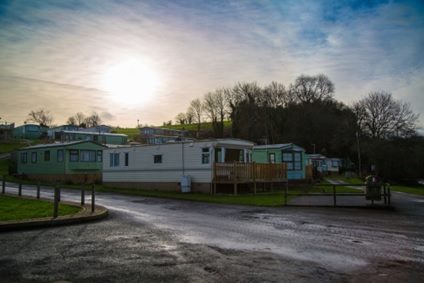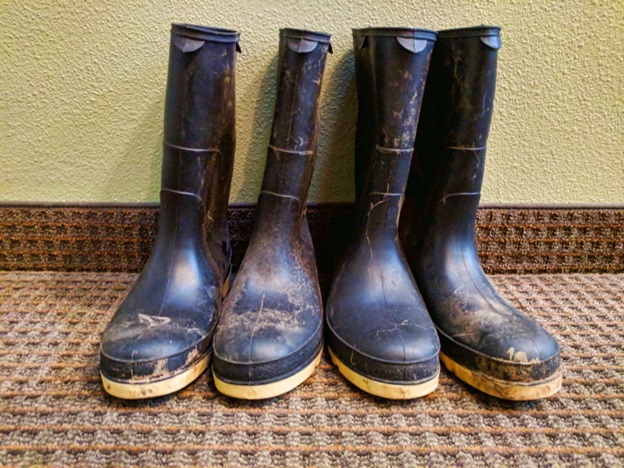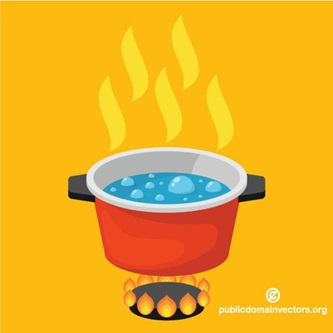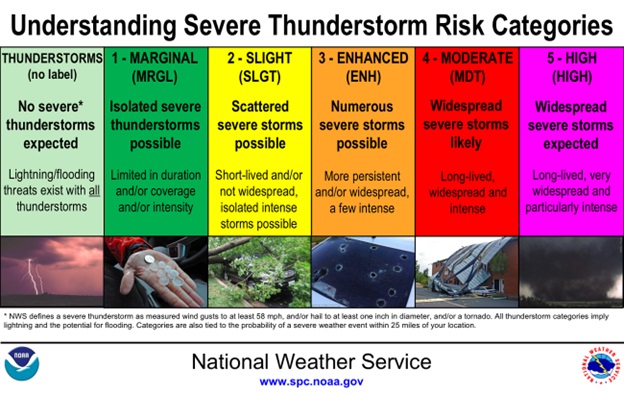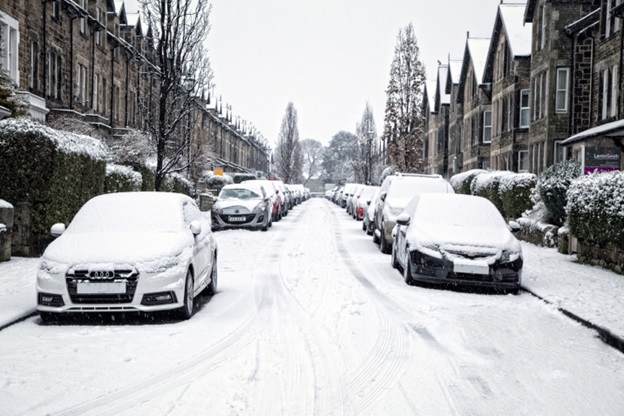PUBLIC SAFETY
Severe weather can strike at any time. Therefore, it is important to be prepared and have plans in place well before a disaster occurs. Our goal is to provide you with resources for each topic below from trusted sources to best help you make your preparations for severe weather. Each topic will list several links and sources, as well as the important information from those sites below. A few sections will encourage further exploration into the links for simplification of this page.
What to do if you live in a mobile home during a tornado warning
If you live in a mobile home during a tornado outbreak you must leave your home and seek shelter at another location. Mobile homes with tie-down systems are still not strong enough against a tornado’s winds. Go to a nearby friend’s or relative’s house which preferably has a basement or safe room away from windows or a local safe shelter meant to be used by the public for emergencies. Make sure you are keeping up to date on all watches and warnings with a NOAA Weather Radio while you are in your secure location.
What to do if you are outside or driving during a tornado
If you are outside and can safely get indoors, find shelter in a sturdy building in an interior room away from windows. If you are driving and the tornado is far away, change course to head away from the tornado, towards clear skies, or find shelter indoors if possible. As a last resort you can shelter in a ditch or ravine. If in this situation, you should lie flat and protect your neck and head with your arms and hands because you will be exposed to flying debris and other weather elements from the storm. If you find yourself in a vehicle and cannot escape the tornado or your vehicle, put your seatbelt on and keep your head below the windshield. DO NOT seek shelter under bridges or overpasses. You can be blown out by the strong winds from the tornado and become a target for debris. It is always a great idea to make a plan and practice it in advance of a severe weather event so that you are prepared!
The Difference Between a Tornado Watch and Warning
A tornado watch means that you need to be aware of and prepared for tornadoes in your area. Tornadoes might be possible later, but you are not currently in any immediate danger. You should review your emergency plans, check your supplies, and be prepared to access your safe room. These watches will be issued by the Storm Prediction Center.
A tornado warning means that a tornado has either been sighted or indicated by weather and radar. There is a tornado nearby. You need to act on your tornado emergency plan and take shelter immediately. These warnings will be issued by your local National Weather Service office.
Also see an article by Roger Edwards from the Storm Prediction Center answering many questions about tornados.
Emergency Supply Kit for Severe Weather
In case of severe weather, the National Weather Service recommends that you have a Tornado Safety Kit created in advance of any severe weather. This kit should include a disaster supply kit that should house emergency supplies like non-perishable food, a can opener, water, first aid supplies, moist towelettes, garbage bags, and plastic ties for waste and blankets/sleeping bags. These supplies should be stored as close to your shelter as possible.
The Federal Emergency Management Agency (FEMA) says that when selecting emergency food supplies for your severe weather kit to make sure you have at least several days worth of non-perishable food. Make sure it is food your family will eat and consider any special dietary needs that your family members have. Some food that FEMA recommends packing are ready-to-eat canned meats, protein or fruit bars, dry cereal, peanut butter, dried fruit, canned juices, non-perishable pasteurized milk, and high-energy foods. See FEMA's information about food safety and sanitation, how to cook the food, and how to manage food without power.
When preparing your water supply, FEMA recommends that you store at least a gallon of water per person per day for multiple days. Children, nursing mothers, and sick individuals may need more water. Also, it is important to consider that medical emergencies may require more water or if you live in a warm climate you will need more water. Do not ration your water unless you are ordered to by authorities. Minimize the amount you need by reducing your activity and staying cool. Do not drink contaminated water unless it is absolutely necessary. You can treat the water by boiling it for one full minute or chlorinating it with 1/8 teaspoon bleach that contains 5.25 to 6.0 percent of sodium hypochlorite. The chlorinated water will need to sit for 30 minutes. After 30 minutes, if it smells like chlorine then can you drink it. These two methods will kill the microbes in the water, but will not remove any other contaminants like heavy metals and salts. However, you can kill microbes and remove those metals and salts by distillation. To distill water, FEMA says to “fill a pot halfway with water. Tie a cup to the handle on the pot’s lid so that the cup will hang right-side-up when the lid is upside-down (make sure the cup is not dangling into the water) and boil the water for 20 minutes. The water that drips from the lid into the cup is distilled.” See this list of emergency water supply tips.
Additionally, the Tornado Safety Kit should include a battery-operated weather radio, a map to track the storms, closed-toe shoes, identification, car keys, your cell phone, and a horn or whistle. The weather radio and map will allow you to monitor and track the severe storms while you are in your shelter. Closed-toe shoes will be important in case you need to walk across debris after the storm. Identification and your car keys (if your car is operating) will allow you to move around your area when the storms passes. Lastly, if there is cell service, your cell phone will allow you to monitor the weather and potentially reach out for help, but as a last resort the horn can be used to signal for help.
Some additional supplies that will vary on your household's needs include masks, prescription medications, non-prescription medications, infant supplies, pet food and water, cash, important family documents, a fire extinguisher, feminine supplies, a fire extinguisher, and a paper and pencil. Many of these will depend on your family members' needs.
Severe Weather Plan for Home
The National Weather Service recommends when severe weather strikes to remember three important things; GET IN, GET DOWN, COVER UP. If you are outside, you need to get inside and find a location as close to the center as possible. Then you need to either get underground or go to the lowest floor available and then cover up with items like blankets and pillows to avoid flying debris. However, it is important to make a safety plan before severe weather strikes.
Your home’s safety plan should be known to your entire household and practiced multiple times a year. One of the most important parts of your safety plan should be the location of your safe room or shelter. The best place for this room is to be underground, either in a basement or storm cellar. Make sure not to shelter under any heavy objects from the floor above as they might fall into the basement. Additionally, use items like pillows, blankets, sleeping bags, coats, and helmets to protect your body from flying debris.
If you do not have a storm cellar or basement (which applies to most people) you need to find a location that is on the lowest floor. The location should be as close to the center of the building as possible, away from doors, windows, and outside walls, and in as small of a room as possible. The National Weather Service recommends places like bathrooms, closets, hallways, and under stairwells. However, these locations need to be as deep inside the building as possible and not be along an outside wall or have windows.
In addition to having a safe room located, you should try to have an emergency supply kit prepared. This kit should be located inside or very close to your safe room. Items that should be included in this kit have been mentioned above under Emergency Supply Kit for Severe Weather.
Ultimately, you need to make sure that you tailor any of your plans and supplies to the members of your household.
Lightning Safety and Tips
There is always going to be lightning during a thunderstorm. If a thunderstorm is overhead and you can hear the thunder, lightning is likely within striking distance. Therefore, you need to get inside immediately because nowhere outside is safe. Safe places include big buildings and hard-topped vehicles. Once you are safely inside do not touch anything that is plugged into an electrical outlet, plumbing or corded phones so that you do not get electrocuted. Lightning risk increases as a thunderstorm approaches and reaches it highest risk when the storm is directly overhead. As the storm moves away that risk decreases. Do not wait until the storm is overhead to go inside and always check the weather before you plan outside events so that you do not get stuck in the storm with no shelter. Wait 30 minutes after the last lightning strike or crack of thunder before going back outside. This will reduce your risk of being struck. Ultimately, if you are forced to stay outside get off of elevated areas, never lie flat on the ground, do not shelter under an isolated tree, do not shelter under a cliff or rocky overhang, get away from bodies of water, and stay away from objects that conduct electricity. These places will significantly increase your chances of being struck.
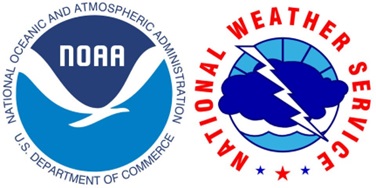
What is the Storm Prediction Center?
The Storm Prediction Center is part of the National Weather Service and the National Centers for Environmental Prediction. Their mission is to work to provide timely and accurate forecasts and watches for severe thunderstorms and tornadoes throughout the United States. They also watch for hazardous winter and fire weather events and issue outlooks for those events as well.
What do the Storm Prediction Center Severe Convective Outlook Thunderstorm Risk Categories mean?
The Storm Prediction Center issues convective outlooks for each day three days into the future, as well as a 4-8 convective outlook. These outlooks outline areas that are at risk for severe and non-severe thunderstorms on a map and include a general summary of the risks as well as a technical discussion for professionals. See the SPC's convective outlooks.. A convective outlook includes 6 categories. The least severe category is the thunderstorm category. In this category no severe thunderstorms are expected, but there could be lightning or flooding. The next category 1-Marginal means that there are isolated severe thunderstorms possible. These thunderstorms will be limited in duration or coverage or intensity. The category 2-Slight means that scattered severe storms are possible. These storms will be short-lived and/or not widespread and could have isolated, intense storms possible. The next category up is 3-Enhanced which means there are numerous severe storms possible and will be more persistent and widespread. 4-Moderate means that widespread severe storms are likely and will be long-lived and intense. The most severe category is 5-High. This category means that widespread severe storms are expected and will be long-lived and very intense.
Flood safety
Before a Flood:
If you live in a location prone to flooding the National Weather Service recommends that you make plans in advance of a threat. First, you should create a communications plan. You need to know how and who you are going to contact in case of a disaster. You need to make sure that they are aware of this too. Then you should create an emergency kit that has food, water, and medicine for at least three days. Additionally, it should include batteries, blankets, flashlights, first aid, boots, and a NOAA Weather Radio. After that you should learn and review what roads to avoid and which ones will get you to higher ground safely.
Often floods can be forecasted in advance, therefore you might have some time to prepare your home as well. This can include filling and placing sandbags around your house and having professionals install check-valves in your plumbing to keep flood waters from backing up into the drains of your home. Lastly, make sure your insurance covers flood damage (this last tip should be done in advance of any flood threat).
If you learn that you might be impacted by a flood in the near future make sure to pack early and be prepared to take or relocate any pets! You may be forced to evacuate, and such plans may be impossible down the road.
Make sure your cellphones and radios are charged in case the power goes out or you need to leave. These will ensure that you are up to date on the current weather conditions. Lastly, if it is highly likely that your house will flood, leave early. Do NOT wait to be ordered to leave.
During a Flood:
During a flood the National Weather Service recommends staying informed by listening to current conditions and updates through a radio, TV, or even your cellphone. Secondly, if you live in a low-level area or an area that is susceptible to flooding you should move to higher ground. If you are ordered to evacuate from your local government officials, do so immediately. If you have time, lock your doors, and turn off all utilities.
If any room has water that is submerging electrical outlets or cords or you hear buzzing or crackling noises, do NOT go into that room. The water in that room likely has electricity in it, which is extremely dangerous.
Lastly, avoid flood waters. The National Weather Service states that it only takes 6 inches of moving water to knock you off your feet. If you happen to get trapped inside your home, move to the highest point, and call 9-1-1. Do NOT drive on flooded roads, as you do not know what could be hiding under there and you could potentially be carried away. Remember the phrase Turn Around. Don’t Drown.
After a Flood:
After the flood you need to wait for instructions from authorities and only return when they say so. Avoid driving on roads unless it is an emergency because emergency personnel need access to the roads in order to provide emergency services to those who need it. Make sure wear heavy work gloves, protective clothes, boots and face coverings when cleaning up. People with has asthma, lung conditions or immune suppression should not enter buildings that have mold growth. In addition to this children should not participate in disaster cleanup.
Be aware of electrocution when participating in cleanup efforts. Do not touch electrical equipment that is wet or if you are in standing water. However, if it is safe to do so, turn off the electric to prevent electrical shock.
As mentioned earlier under the During a Flood Section, do not walk through flood water. It is contaminated and can contain dangerous debris and downed power lines that could be charging the water.
Lastly, if you need to use a generator make sure to only use it outdoors so that you do not fill the house up with carbon monoxide.
What should be in your Winter Weather Supply Kit
The National Weather Service urges the public to stay off the roads when there is hazardous winter weather, but if you absolutely need to go out you need make sure you have an emergency supply kit on hand to be prepared for the worst. Your kit should include a blanket, boots, a hat, gloves, a set of warm clothes, a flashlight, some water and snacks, a cell phone charger, first aid kit, a shovel, ice scraper and snow brush, a full tank of gas, flares, a tow rope, a bag of sand or cat litter and jumper cables. Some of the supplies will keep you warm, help you get your vehicle unstuck from the snow and be able to treat any injuries in case of an accident. These can easily be stored in your trunk or backseat and ultimately “could become your lifeline if disaster should strike”.
Winter Weather Preparedness
In preparation for winter and the weather it may bring the CDC recommends preparing you, your family, your house, and car in advance of any threats. One of your first steps should include creating a communication plan with your family in advance. You need to know who to contact, and they need to know that they are responsible for you too. Then you should weatherproof your home if possible. The CDC recommends insulating any water lines that are against exterior walls so that they are less likely to freeze during cold temperatures, caulk and weather-strip doors and windows, insulate walls and the attic, and repair any roof leaks. Next, you should have your chimney or flue inspected in case you need to use them for heating. You should also create an emergency Winter Weather Supply Kit, which should include the supplies mentioned under What should be in your Winter Weather Supply Kit. Lastly, have your car checked and in proper condition for winter weather and temperatures. This includes having the radiator checked, replacing the windshield-wiper fluid, making sure your tires have proper tread and air pressure, and keeping the gas tank near full to prevent ice in the tank and fuel lines.
When there is an impending winter storm you should make sure you check your emergency supplies, which include water and food. Make sure to have flashlights, warm blankets, sleeping bags and clothes available in case the power goes out for an extended period. These supplies will help you see and keep you warm. If you need to heat your home using a wood stove, fireplace, or space heater, you need to be extra careful. Some tips that the CDC recommends include using other sources of heat when the power goes out like blankets and coats, a fireplace, and portable space heaters. Additionally, they recommend using electric space heaters with automatic shut-off switches and to keep them away from flammable materials like curtains and blankets and to make sure your heating system is properly ventilated. See more safety tips for heating your home.
In addition to heating your home safely, the CDC recommends using battery-powered flashlights or lanterns instead of candles to light your home in case of a power outage. Candles can cause house fires, but if you need to use candles, do not leave them unattended.
If you plan to use a generator in case the power goes out, you need to make sure it is at least 20 feet away from any window, door, or vent, and away from rain or snow. You should also install a carbon monoxide detector to prevent carbon monoxide (CO) poisoning. Never use generators inside your home as the fumes are deadly. Do not use the generator if it is wet, and lastly, only plug appliances into the generator with a heavy-duty, outdoor-rated extension cord.
Another tip the CDC recommends when stuck in a winter storm is to conserve heat. You can do this by not opening unnecessary doors or windows, closing off unneeded rooms, placing towels or rags in the cracks under doors, and covering windows with blankets at night.
Also, to help keep your pipes from freezing the CDC recommends leaving all water taps slightly open so that they drip continuously. This constant movement of water will help keep the water from freezing. Additionally, you should keep the temperature inside your home warm and allow the heat to reach the water pipes by keeping cabinets under sinks open. However, if your pipes do freeze thaw them with a hair dryer, not a torch, and if you are unable to thaw them ask for water from your neighbors or use bottled water.
Some other topics that the CDC covers on their site include how to stay safe and warm when you are outside, how to keep babies and older adults warm, and the signs of hypothermia and frostbite. These topics can all be found
See the Federal Emergency Management Agency (FEMA)'s useful guide on how to prepare for a winter storm. Many of the topics mentioned can be found here as well as additional material on myths/facts and helplines once the storm is over. Also see FEMA's' own website that provides information about winter weather and how to be prepared. Some of this material is given through videos which can be found at the bottom of the page.
What is the difference between a Winter Advisory, Winter Watch and Winter Warning and Ice Storm Warning?
The National Weather service states that a Winter Weather Advisory is issued when any amount of freezing rain or when 2-4 inches of snow is expected to cause inconvenience but not significant enough to be a warning. A Winter Weather Advisory’s criteria varies based on the region. Therefore, it is likely that a Winter Weather Advisory in one region may constitute a warning in another, so it is important that you are aware of your region’s criteria. For Ohio a Winter Weather Advisory means that:
- 3 inches of snow or under half an inch of sleet are expected to fall in 12 hours
- Falling or blowing snow will reduce visibility to a quarter mile or less with winds of 34 mph or less
- Significant black ice conditions will exist with 2 inches of snow or under half an inch of sleet in 12 hours
- Ice accumulation under a quarter of an inch
A Winter Storm Watch is issued when there is a potential for significant and hazardous winter weather within 48 hours. This weather may not occur but it is possible. This significant and hazardous weather is defined as 5 or more inches of snow/sleet within 12 hours or 7 inches within a 24 hour period AND/OR enough ice accumulation to cause damage to trees or power lines AND/OR a life threatening or damaging combination of snow and/or ice accumulation with wind. A Winter Storm Warning is issued when the significant and hazardous conditions from above is occurring or imminent. Finally, an Ice Storm Warning is issued when ice accumulation of a quarter on an inch or more is expected in a 24 period.
